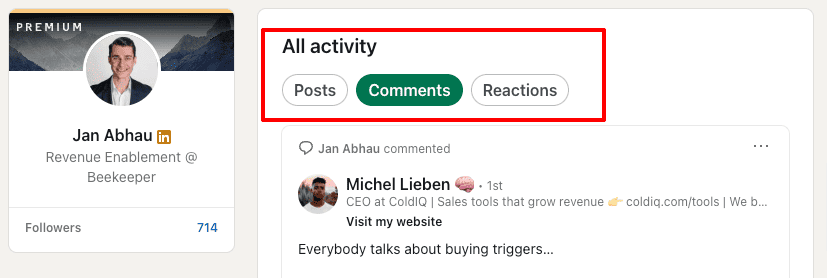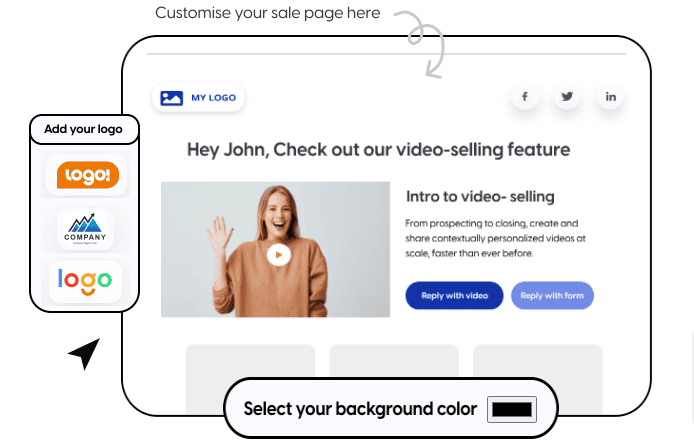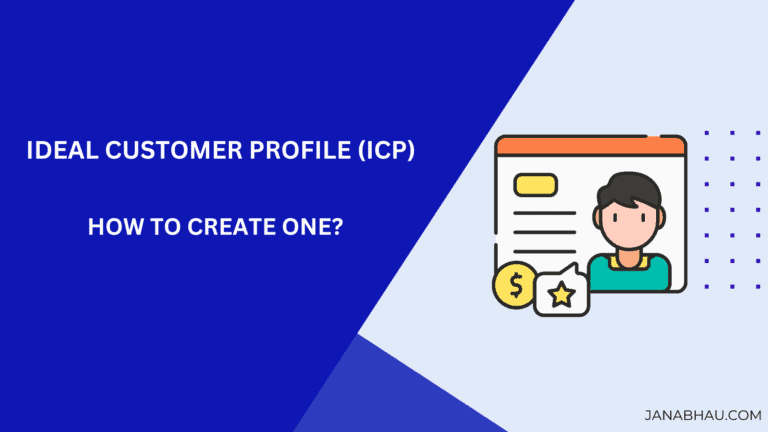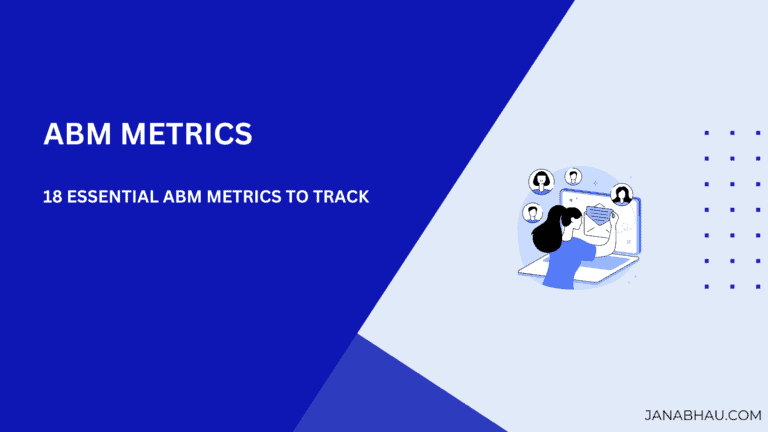B2B Sales Prospecting: 8 Methods to Master in 2024

Are you feeling lost sometimes in the vast wilderness of B2B sales prospecting? You’re not alone.
Knowing where to start and what to consider when seeking potential clients is a common challenge. It can seem overwhelming, but it doesn’t have to be.
Imagine having a clear roadmap guiding you through this complex process, enabling you to take the first steps in uncovering high-quality leads genuinely interested in what you offer.
In this guide, I aim to simplify the process and provide you with proven techniques that have worked for me and many others.
So, let’s embark on this journey and start turning those potential leads into loyal customers!
What is B2B Sales Prospecting?
B2B sales prospecting is essentially the critical task of spotting and connecting with potential clients for your business.
It’s all about uncovering those businesses that could really use your product or service, but they might not know it yet.
Picture it like a treasure hunt; you’re combing through the crowd to find those gems – your future business clients.
When done correctly, prospecting is the engine that drives your business ahead, linking you with companies that are likely to become your loyal customers.
So, as you embark on the journey of B2B prospecting, keep this in mind – it’s not just about sending out a few messages to people;
it’s about discovering high-quality leads that can genuinely prosper from what you bring to the table.
What Are 8 Sales Prospecting Techniques
Below, you’ll find a list of 8 essential B2B sales prospecting techniques I highly suggest implementing AND mastering.
Build a Clear ICP (Ideal Customer Profile)
In B2B sales prospecting, It’s all about identifying the types of companies that are most likely to purchase your products or services, and doing so in the most time and capital-efficient way for your business.
Imagine an ICP as a detailed sketch of your perfect customer – it includes aspects like their industry, company size, budget, and specific pain points your product can address.
After establishing your ICP, you should prioritize these potential customers into tiers. A ‘Tier 1’ company that fits your ICP perfectly and offers a high revenue potential would receive more attention.
Conversely, a ‘Tier 3’ company that loosely fits your ICP and has lower revenue potential would get less focus.
This approach ensures your sales team’s efforts are optimally directed.
Learn How To Do Research at Scale
In this age, personalization and informed approaches are expected, but to be truly successful, you still need to achieve a higher level of quantity. Thus, finding the right data swiftly is a key skill to master.
- Begin with personalization points such as self-authored LinkedIn content, engagement with other content on Linkedin, and information from company websites. These can provide valuable insights into your prospects’ needs and interests.
- Next, identify potential triggers that might indicate they need your product or service. This could be anything from Glassdoor reviews, changes in headcount or job roles to recent company funding. You can filter prospects on Linkedin Sales Navigator based on most of the triggers above.
- Lastly, leverage data enrichment tools to gather contact data and intent. These platforms can help you find verified contact details and get intent data, which can significantly improve the relevancy and timing of your messages.

Become A Cold Call Pro
Becoming a cold call pro is another effective B2B sales prospecting technique.
Start with your Ideal Customer Profile (ICP) and develop a script tailored to each buyer persona and industry, addressing typical pains and citing reference customers.
As you gain experience, strive to rely less on the script. This flexibility allows you to truly listen to your prospects, fostering more genuine connections and better questions.
Familiarize yourself with common objections like ‘I’m busy,’ ‘I already have a solution,’ or ‘I’m not the right person,’ and practice responding to them effectively.
Remember, follow-up is crucial in cold calling – always ensure your follow-ups are timely, keeping the momentum of the conversation going.”
Write Personalized Outbound Emails
Start by swiftly identifying personalization points. Adopt a solid cold email framework for constructing your emails, ensuring you captivate your reader with an intriguing subject line and opening sentence.
Next, weave in a narrative that spells out the challenges they’re currently facing and present an ideal scenario where your product or service comes to the rescue.
Reinforce your proposition with social proof, such as client testimonials or case studies.
Wrap up your email with a compelling, interest-based CTA nudging them toward the next step.
Include a ‘P.S.’ at the end, perhaps with another personalized element or dash of humor to leave a lasting impression.
Lastly, keep up to date of the latest AI email assistant tools, which can make this process more efficient and effective.”

Start Social Selling
“Social selling is a key B2B sales prospecting technique. It’s about leveraging platforms like LinkedIn to connect and engage with potential clients.
Regularly sharing insightful content builds trust and positions you as an authority, creating a pool of engaged inbound leads.
Remember, it’s a long-term strategy that requires patience, persistence, and authentic interaction.

Always Think in Sequences
Understand that most prospects are not aware of your solution, let alone ready to buy instantly.
Instead of immediately pushing for a sale or meeting, use sequences to gradually unfold a story and educate them about your product or service.
Your first call to action should not be a hard sell; rather, it should pique their interest and make them want to learn more.
Moreover, don’t limit yourself to one channel. A multichannel approach is essential to build various touchpoints and create a consistent engagement with your prospects.
Remember, successful prospecting is more marathon than sprint.
Use Outbound Videos
Unlike traditional text-based approaches, video prospecting breathes life into your message with enhanced emotion, energy, and personality, leading to increased engagement with potential customers.
In fact, Hubspot conducted an experiment and found that implementing a video prospecting strategy quadrupled their sales opportunities!
Video, being the ideal digital substitute for face-to-face interaction, proves particularly effective in certain situations.
These include sending cold outreaches, reconnecting with prospective customers, or crafting videos for your prospect to share with other stakeholders.
Make sure to use the latest video prospecting tools to build a scalable approach.

Build on Your Inbound Marketing
Remember, most potential buyers educate themselves before making a sale.
That’s where Paid Advertisement comes in handy, extending your reach. Email Marketing allows for personalized communication, keeping prospects engaged.
Content Marketing with SEO is crucial for attracting organic traffic and providing the valuable insights prospects seek.
Lastly, LinkedIn and other Social Media serve as platforms to connect and share your offerings with businesses.
The key to successful inbound marketing? Providing value at every touchpoint across all channels, catering to the self-educating prospect.
Key Considerations For Doing Sales Prospecting Successfully
Successful prospecting hinges on a strategic approach. Here are some key points to bear in mind:
Familiarize yourself thoroughly with your ideal customer profile. Understand their requirements, challenges, and preferences so you can customize your B2B sales prospecting strategies to align with them.
Don’t downplay the importance of research and data. Incorporate these into your sales process to identify potential leads and personalize your outreach.
Personalization is crucial in setting yourself apart from other sales professionals. Be it a unique video, an email, or direct mail, ensure each communication is tailored to the specific prospect.
Demonstrate genuine interest and relevance of your product or service.
Adopt a multi-channel approach. Diversify your mediums – use emails, social media, direct mail, and even face-to-face interactions.
Finally, patience and persistence are vital. Prospecting may not yield instant results.
Don’t be discouraged by initial rejections; instead, stay committed and continue your efforts. Remember, in prospecting, persistence is rewarding!
Wrapping Up and My Experience With B2B Sales Prospecting
While training new sales reps, a significant portion of my time is dedicated to ensuring they become adept at understanding their Ideal Customer Profile (ICP).
It’s crucial to know which companies are most likely to purchase your product or service and, within those companies, which roles are most likely to benefit from your product and service.
Moreover, it’s essential to understand their challenges, goals, and specialties fully.
If you could only perfect one aspect while managing the rest at a mediocre level, I’d advise mastering your ICP knowledge.
An in-depth understanding of your customer’s current situation and challenges will allow you to craft messages that resonate and foster productive sales conversations.
However, true success in B2B sales prospecting comes from implementing and mastering all these aspects.
Regularly evaluate which channels and methods of prospecting are most effective for you and double down on those for optimal results.
Frequently Asked Questions
How do you prospect in B2B sales?
Prospecting in B2B sales involves a multi-step process:
- Identify Your Target Market: First and foremost, understand your Ideal Customer Profile (ICP). This involves identifying the type of companies most likely to need your product or service and the roles within those companies involved in the buying decision.
- Research: Utilize online resources such as LinkedIn, company websites, and industry reports to gather information about potential leads. Understand their business model, the challenges they might be facing, and how your product or service can provide a solution.
- Outreach: Once you’ve built a list of potential leads, reach out to them. Build a sales process including cold calls, emailing, or social media messages. Make sure your message is personalized, addressing the specific needs and challenges of the potential client.
- Follow-upthat: Don’t be discouraged if you don’t get a response immediately. Persistence is key in sales prospecting. Follow up with potential leads, but ensure you’re providing value in each interaction.
- Evaluate and Refine: Regularly evaluate the effectiveness of your prospecting methods. Which channels are yielding the best results? What messaging resonates most with your target market? Use this information to refine your approach and improve your prospecting efforts.
Remember, successful prospecting is about building relationships and providing value. It’s not just about building sales pipeline but about understanding your potential clients’ needs and how your product or service can help them.
What is the best prospecting method for B2B?
The best prospecting method for B2B sales greatly depends on your target audience and can be broadly categorized into two main strategies: outbound sales and inbound marketing.
- Outbound prospecting involves proactive outreach to potential customers. This could include cold-calling, cold emailing, or sales reps approaching prospects on LinkedIn. The objective is to reach prospects who may not be actively seeking your product or service but could still benefit from it. Personalization and research are key here; understanding a potential client’s unique challenges and how your offering can help is crucial to success.
- Inbound Marketing is about attracting prospects who are already in the market for what you offer – qualified leads. This is achieved by creating valuable content that answers their questions, solves their problems, or meets their needs in some way. Lead generation strategies could include SEO-optimized blog posts, webinars, whitepapers, or social media engagement. The goal is to position yourself as an expert in your field so that when a potential customer is ready to buy, your company is top of mind.
In practice, most successful B2B sales teams use a combination of both methods to build a successful sales funnel.
They create engaging, valuable content to attract inbound leads, while also proactively reaching out to potential customers through outbound sales strategies.
The key is continually evaluating and adjusting your tactics based on your results and using the right sales tools to ensure scalability.



![How to Craft an Effective Prospecting List in 2024 [+Template]](https://janabhau.com/wp-content/uploads/2024/04/Screenshot-2024-04-14-at-16.25.44-768x433.png)


